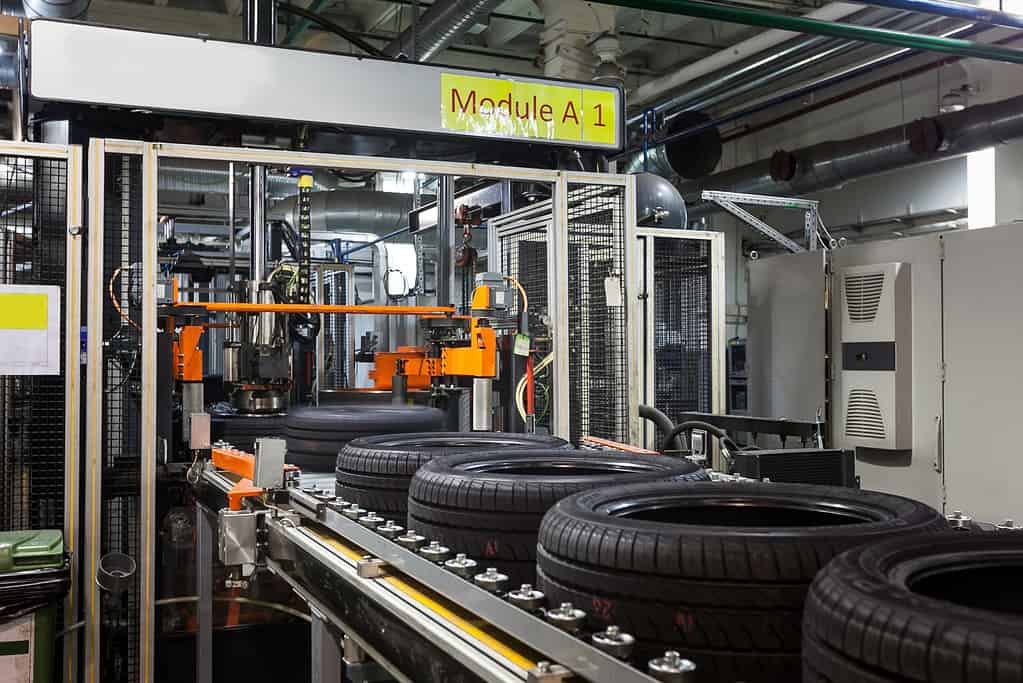Category: Manufacturing

Cycle Time vs. Throughput Time: What’s the Difference?
Published:What is Cycle Time? Cycle time can be defined as the amount of actual work time needed to complete one task. Any sort of downtime is excluded from cycle time. The Benefits of Cycle Time Staying ahead of the competition – You can outpace your competition by keeping a close eye on your cycle time […]
Read more »
Takt Time vs. Cycle Time: What’s the Difference?
Published:What is Takt Time? Takt Time refers to the speed at which a product must be manufactured in order to meet customer demand. The Benefits of Takt Time Implementing Takt Time into your organization is beneficial for a number of reasons: Identifying bottlenecks – If an organization is making Takt Time a priority, bottlenecks tend […]
Read more »
Understanding Degree of Freedom: Importance and Applications
Updated:Having enough data available for what you want to do is vital for estimates that are as precise as possible. Degree of freedom is a concept that assists in higher forms of statistical analysis.
Read more »
Using Kanban to Streamline Processes and Improve Efficiency
Updated:Kanban is a tool used in Lean Manufacturing to visually manage the workflow through your processes. It is based on the concept of a pull system where things are only replaced as they are consumed.
Read more »
Unlocking Improvement Opportunities with Modular Arrangements of Predetermined Time Standards (MODAPTS)
Updated:What is the most efficient way for an employee to complete a task? Could the way they are getting the job done improve? Could it be safer? Predetermined motion time systems help to answer these questions.
Read more »
How the Toyota Production System Can Improve Your Business Processes
Updated:The Toyota Production System (TPS) serves as the foundation for Lean Manufacturing. Let’s explore this powerful method for improving your processes. The Toyota Production System (TPS) is a manufacturing philosophy and a set of management practices developed by the Toyota Motor Corporation. It emphasizes continuous improvement, just-in-time production, and efficient use of resources, with the […]
Read more »
Lean Manufacturing: Improving Quality and Reducing Costs
Updated:Lean manufacturing seeks to get rid of the extra fat and waste in your process while seeking to build muscle in your production processes. Let’s see how.
Read more »
Understanding ERP: The Business Management System that Streamlines Operations
Updated:Enterprise Resource Planning (ERP) is a business management system that integrates all aspects of a company’s operations, including finance, human resources, manufacturing, supply chain management, and customer relationship management. ERP software allows businesses to automate and streamline their processes, creating a unified and efficient system that improves productivity and reduces errors. It provides a centralized […]
Read more »
Converting DPMO to Sigma Level and Cpk: A Step-by-Step Guide
Updated:There are several metrics you can use to measure how well your process is performing. Let’s look at three of them and discuss how they are calculated and related. The three are DPMO, Sigma Level and Cpk. Convert DPMO/Sigma to Cpk Before discussing how you can convert DPMO (defects per million opportunities) to sigma level […]
Read more »
Lessons from Defects: How to Improve Processes and Enhance Customer Satisfaction
Updated:Defects are products or services that fail to meet customer requirements. By understanding defects created, we can work to reduce or eliminate them and ensure customer satisfaction.
Read more »
Containment Best Practices: Ensuring Product Integrity
Updated:If you have a non-conforming or defective product coming off your production line, what do you do with it? Utilizing a strategy of containment might be the way to go. Let’s learn more about this. Containment of non-conforming products refers to the actions you take to prevent the distribution or use of products that do […]
Read more »
A Supply Chain Case Study – Socks Manufacturing: Part 2 of 2
Published:A socks manufacturing company in India turned to TQM to improve its supply chain. In Part One, the case study describes the process of elminating a significant cost for the company – delivery delays. This week, Part Two of the case study looks at the broadening of the application of process improvement beyond deliveries. The […]
Read more »
A Supply Chain Case Study – Socks Manufacturing: Part 1 of 2
Published:A socks manufacturing company in India turned to TQM to improve its supply chain. In Part One, the case study elminates a significant cost for the company – delivery delays. Part Two of the case study looks at the broadening of the application of process improvement beyond deliveries. A fledgling socks manufacturing company in India was working to […]
Read more »
FLEXcon: Lean for the Long Run
Published:The following are selected highlights of a corporate leadership profile of FLEXcon. The complete article – with more details about Lean application and how the company avoided layoffs during the recession – is available for purchase on the iSixSigma Marketplace. FLEXcon positions itself for growth by embracing Lean at every level More than 50 years […]
Read more »
Team Teachings: Lessons in Operator, Equipment and Product Accountability
Published:Process data is critical. But taking a step back to look at accountability metrics provides another level of continuous improvement opportunities as shown in this real-world Six Sigma project targeting off-grade production in a carpet yarn manufacturing process.
Read more »
Team Teachings: Improving Process Operator Competency
Published:Polymer chip manufacturing is a multi-step, large-volume process that makes hundreds of millions of pounds of products annually at a typical plant. Unlike fiber extrusion, which requires the use of multiple units of specialized equipment, chip manufacturing involves fewer machines operated in either continuous or batch modes. Chip manufacturing is often driven by operator decisions, […]
Read more »
Japan Disaster Rattles Manufacturers Worldwide
Published:According to a March 24 report from Objective Analysis, nearly 25 percent of the world’s semiconductor production capacity is in Japan, as well as more than 60 percent of the silicon wafers from which semiconductor chips are created. In 2010, industry analysis firm iSuppli determined that Japan held about 35 percent of the $31.5 billion […]
Read more »
No Cause for Alarm: Avoiding Control Room Overload with 5S
Published:The typical plant control room has changed dramatically over the years. Alarm management – which once was simply a sound or flashing light designed to get the control room operator’s attention – has changed dramatically, too. Many control rooms have replaced analog panel boards with multiple screens of bright and colorful representations of plant equipment. […]
Read more »
Streamlining the Ordering Process for U.K. Book Publisher
Published:The publishing industry is on the threshold of major structural changes. The arrival of e-books is only the first threat, and it is having an impact sooner than expected. For example, Amazon.com sold more e-books than paper books in the first quarter of 2010. The credit crunch also has reinforced retailers’ demands for smaller, more […]
Read more »
Piggybacking Air Filters to Save Shipping Costs
Published:Cummins operates three plants San Luis Potosi, Mexico, which produce and ship products daily to distribution centers in the United States. These plants produce systems such as reconditioned engines, alternators, and filtration and exhaust systems. Two of the three plants were looking for ways to reduce the high costs of trucking the products, so Rebecca […]
Read more »
European Wind Project Embraces Lean
Published:With assistance from Spanish wind-turbine manufacturer Gamesa, nonprofit foundation Tekniker and several other European technology firms, COSMOS seeks increases in turbine quality, as well as lower costs and faster manufacturing times, according to a release from Ibermática. According to the COSMOS consortium, many European turbine assembly operations involve both manual labor and work done by […]
Read more »
U.K. Packaging Firm Celebrates First Year of Lean Six Sigma
Published:Based in Bardon, Leicestershire, U.K., Benson Group is one of the country’s largest carton suppliers, producing packaging for both the food and pharmaceutical industries at its 130,000-square-foot facility. The Bardon plant produces sheets of printed cardboard that is then cut and glued for use in the food industry as containers. With the adoption of Lean […]
Read more »
The Customer Talks Back: Musings on Call Center Efficiency
Published:Running a call center is like handling a job interview: First impressions are critical. Good intentions do not make up for tardiness, ill-fitting clothing, dirty shoes, the inability to reasonably pronounce the interviewer’s name or ignorance about what the company does. The primary purpose of a call center is to increase the profitability of the […]
Read more »
Lean Techniques Help Boeing Production Take Flight
Published:In December 2010, the company announced that it would be ramping up production of its popular 777-series wide-body jet from 5 airplanes a month to 7 per month in 2011, and again to an average of 8.3 a month in 2013. Earlier in the year, Boeing also said it would be boosting production of its […]
Read more »